Section 7.3. Improving the Existing File to Survive Magnification
7.3. Improving the Existing File to Survive MagnificationIf the image is unacceptable once resized and no retouching has been done, drop the image into the new canvas you created; in the case of Figure 7-6, use the billboard image created earlier. Again, if you have problems making the image full size, try to create the biggest size you can within your limitations.
Figure 7-6. Motorcycle image dropped into billboard canvas at original size (pretty small, eh?)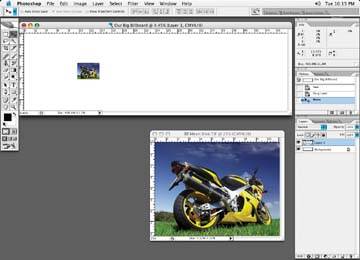 Remember to add an extra amount of canvas for bleed . Bleed on an image is basically the extra portion of the image that extends around the perimeter of an image or ad. When an image or ad is printed and the image prints to the edge of the paper or page, an extra amount of image is needed so that when the paper is trimmed to the printed size, there is image or bleed there in case the trim process is slightly off. If the image were supplied with no bleed and the trimmer cut the paper outside of your image, a small amount of the white paper will be seen on the edge of the advertisement or printed material where the trimmer or cutter was off. In our case here, the billboard specs include the bleed. 7.3.1. Using the Client's Image as a Position FileIf supplied, use the client's file as a position file to build the image composition. Unless you are the one doing the complete design of the billboard, the client (or ad agency or design house) will supply you with a Quark file of the billboard layout. As discussed in Chapter 6, you can go into Quark and save the file as an EPS. Call that EPS file into Photoshop and use the file as your position file. In the case of this motorcycle billboard, we'll be attempting to make the image look better at a large magnification, so I'll concentrate on that in this chapter. Use the Transform Figure 7-7. Image resized to fill the billboard (wow, 1344%!)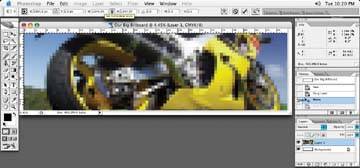 Looks pixilated at this point, but once we accept the transformation, the image will look like Figure 7-8. Figure 7-8. This illustration shows just how much of the image is extending beyond your canvas If you find the image size is getting too large, keep in mind that at this point, the image you just pasted, repositioned, and enlarged is extending well beyond your canvas size, and Photoshop knows that there is much more image available than what you see. You can drag the image around in your canvas, as in Figure 7-9, to see that the image has not been lost just because you scaled it up beyond the canvas size. Figure 7-9. Moving the image around displays the portions of the image that are hidden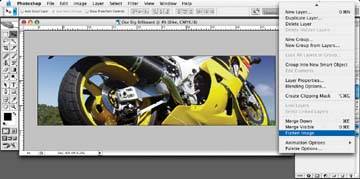 If you are pushed for size, you can reduce the size of your file by cropping the image (with the Crop tool) or flattening the file at this point. Make sure that if you use the Crop tool, you don't crop into the live area of your image. I usually flatten the file, as I've done in Figure 7-10. Remember that once you crop, you lose the ability to move the image around. When building large files though, proper positioning should have been determined well before you have gotten to this stage! Figure 7-10. I have chosen to flatten the file at this point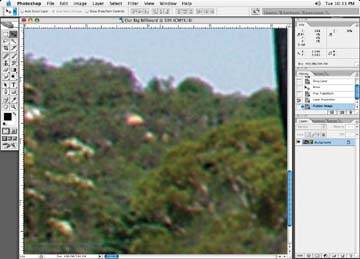 7.3.2. Improving the Image Through RetouchingNow that we have our image at the correct size, or close to it, and we know how much of the image we need to concentrate on, we can know get down to the business of improving its appearance. Improving low resolutionlooking files is probably the most time-consuming retouching one can do. You'll have to be patient. There are basically four areas of concern when an image is blown up. It can look soft, as in Figure 7-11; have aliasing issues, as in Figure 7-12; appear grainy, as in Figure 7-13; and/or have blotchy areas, as in Figure 7-14. Figure 7-11. A soft-looking image area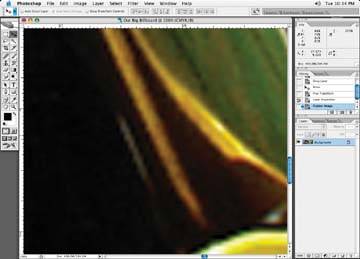 Figure 7-12. This portion of the image has the jaggies or staircasing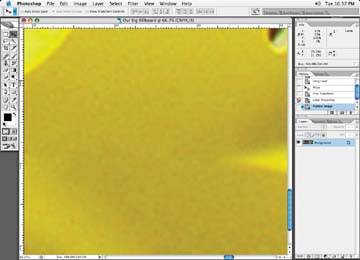 Figure 7-13. This portion of the image looks grainy, particularly the light areas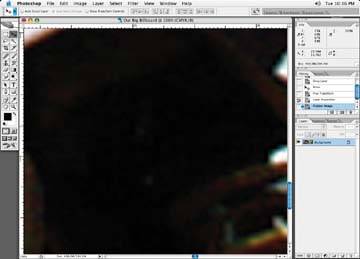 Figure 7-14. This portion of the image looks blotchy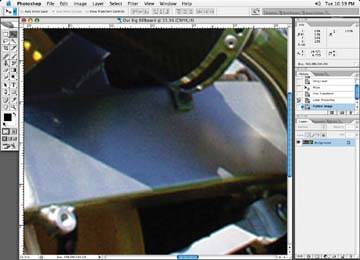 Let's break down each problem area and see what can be done to minimize or eliminate these artifacts. Basically, there is no magic button to eliminate these artifacts, so I rely on some basic techniques to help reduce these problems. They are all handled in a similar fashion. 7.3.3. Preliminary AdjustmentsOnce an image has been sized up to a large degree, I typically look over the entire image and clone out any noise and smooth the image out, as Figure 7-15. I do this regardless of whatever else I'm going to do to the image. It would be the first step when scaling up images to a large degree to make them look better. This was accomplished by using a low opacity Clone tool brush and massaging the area with my Clone tool, constantly changing the position of the brush settings so that there are no repeat patterns on the image. Figure 7-15. Image from Figure 7-14 cleaned up with the Clone tool You may want to fix the background or a non-focal point of the image with one overall correction before getting into the nuts and bolts of the image. For instance, if your image has a generic type backgroundin this case, the trees in the background Figure 7-16 that are not the focal pointthen you can mask off the focal point of the image to protect itin this case, the motorcycleand then add an overall Gaussian blur to the background, as in Figure 7-17. Figure 7-16. The background of the image; the trees can be blurred to help minimize the amount of retouching you have to do on nonessential areas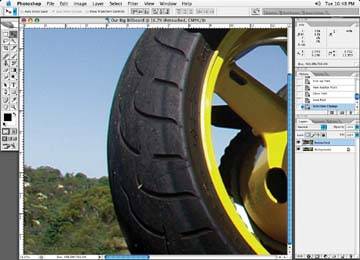 Figure 7-17. A Gaussian blur is added to the background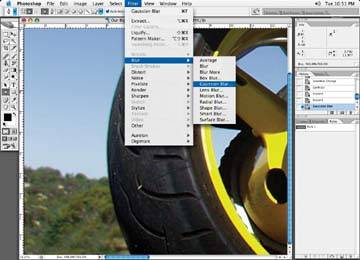 Then add a small amount of noise to break up the softness of the background. As you can see in Figure 7-18, this makes a couple things happen. It helps the main focal point of the image stand out a little more, and it reduces the amount of work you have to do to the image, particularly if a lot of the background of the image is showing and isn't considered the focal point of the image. Blurring the background helps reduce any jaggedness or pixilation that may have occurred during the enlarging process. You can then concentrate your efforts on the main focal point of the image. Figure 7-18. Add noise to the background to break up the extreme smoothness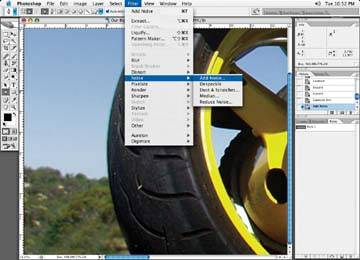 |
EAN: N/A
Pages: 83
 Scale tool, as shown in Figure 7-7, to manipulate the image until you have the image in the correct position and size.
Scale tool, as shown in Figure 7-7, to manipulate the image until you have the image in the correct position and size.